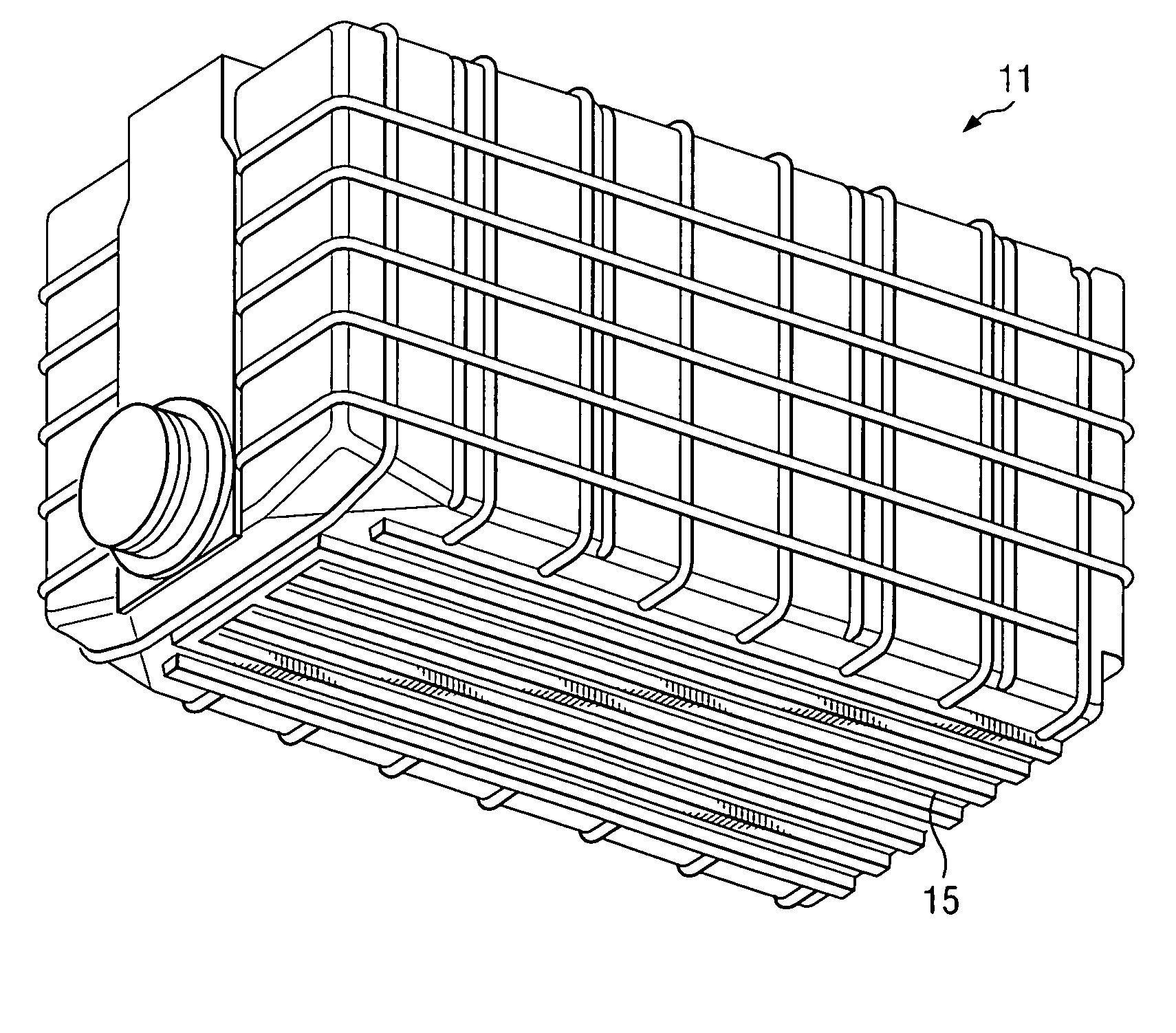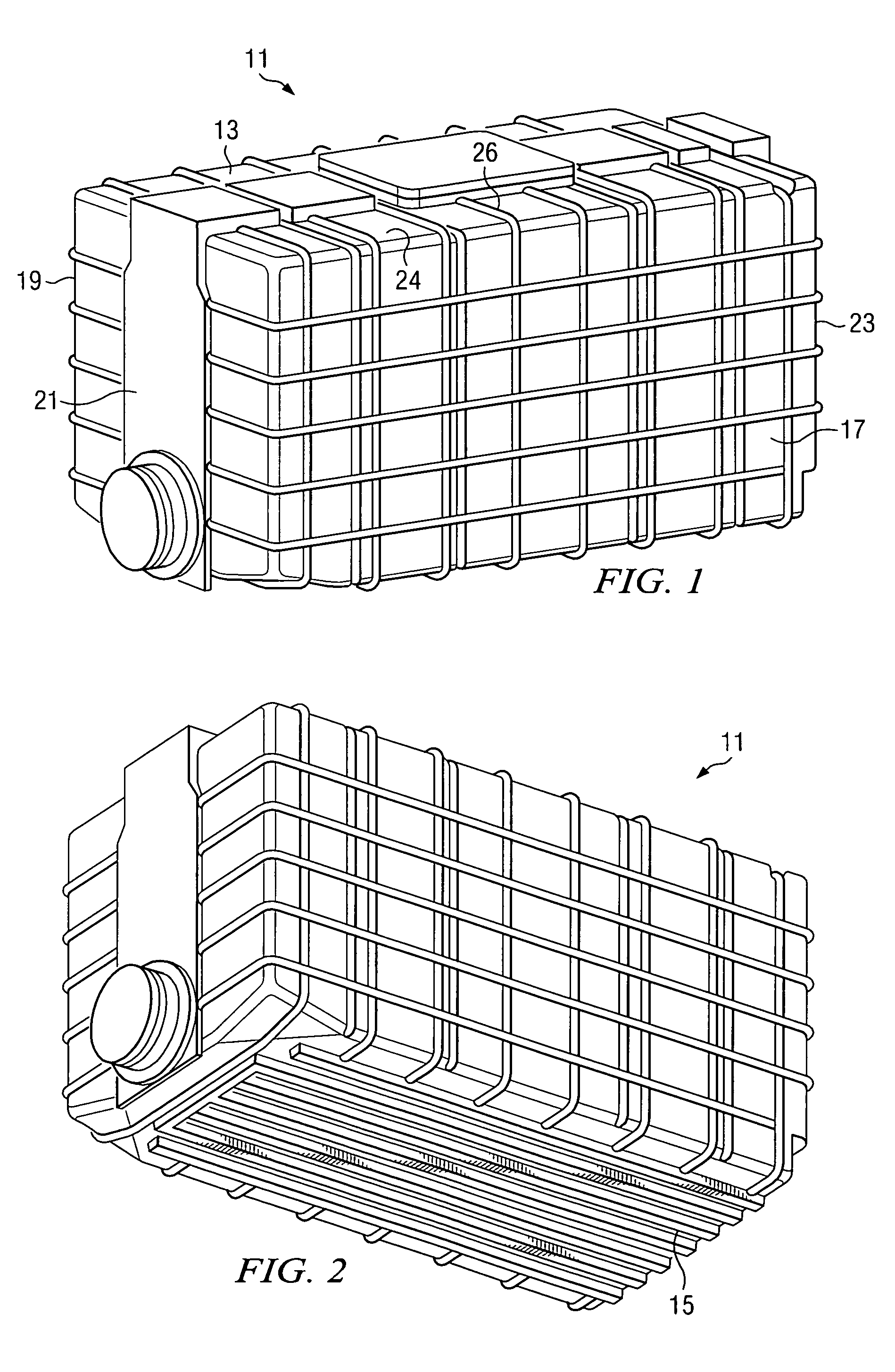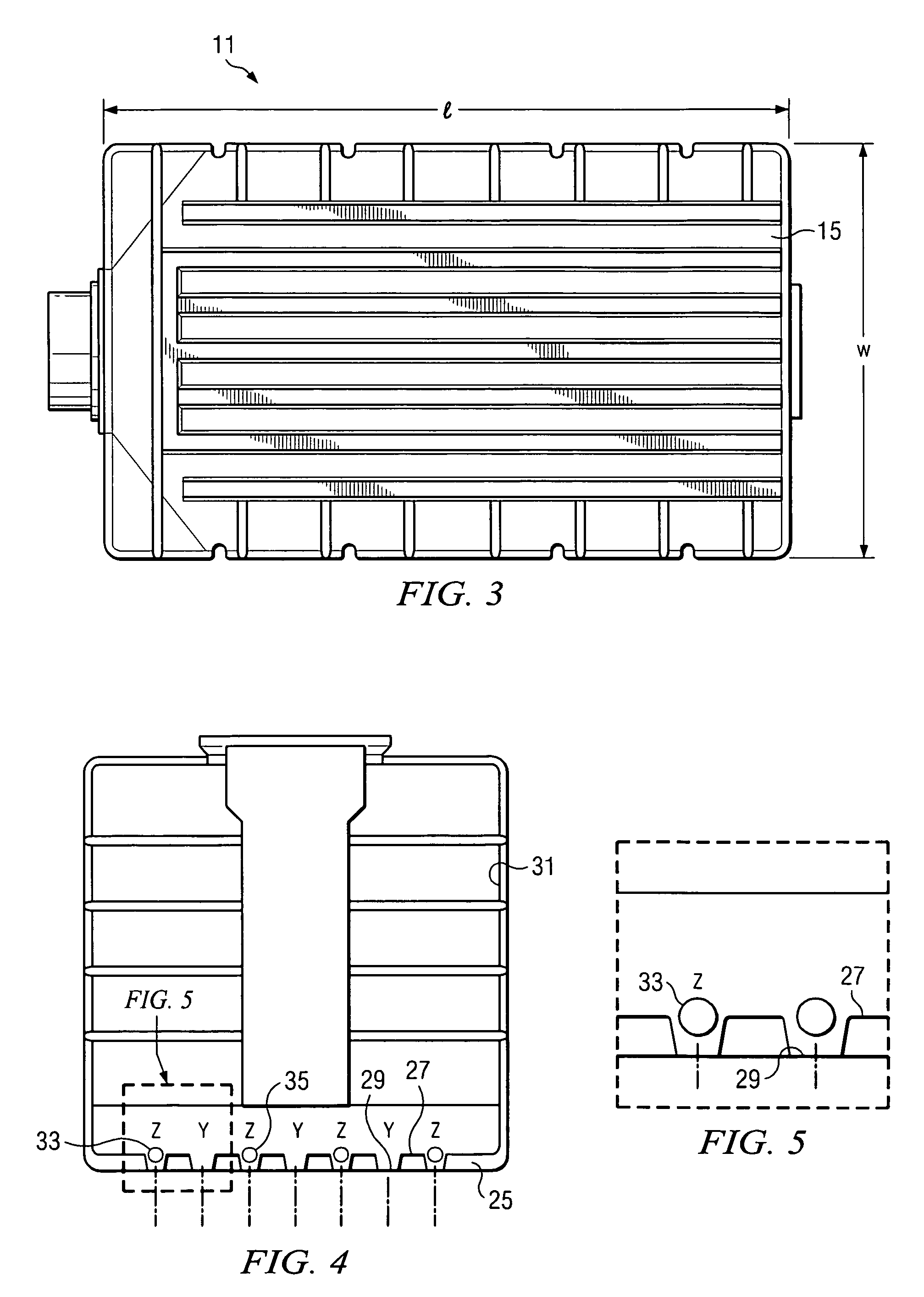Molded fish transport tank
a technology for transporting tanks and fish, which is applied in pisciculture and aquaria, application, animal husbandry, etc., can solve the problems of unstandardized configuration of live hauling trucks, maintenance problems, and livestock may die due to lack of oxygen, so as to reduce the overall maintenance cost and eliminate certain disadvantages and drawbacks.
- Summary
- Abstract
- Description
- Claims
- Application Information
AI Technical Summary
Benefits of technology
Problems solved by technology
Method used
Image
Examples
Embodiment Construction
[0028]The transport system of the invention is used to transport aquatic life, preferably finned fish. However, as will be appreciated by those skilled in the art, the term “fish” can be interpreted broadly to encompass not only animals taxonomically classified as such (e.g., fin fish) but also “fishery products” including, for example, a wide variety of saltwater and freshwater fish species as well as crustaceans, shellfish, and other species exhibiting similar life-support requirements.
[0029]As used herein, the term “transport tank” refers to a molded container specially adapted for harvesting, storing and transporting live fish. The transport tanks of the present invention have generally rectangular or square cross-section, although other shapes are within the scope of the invention. The transport tanks of the present invention are preferably made from lightweight, durable, synthetic plastic, such as a medium-density polyethylene resin. However, other materials such as fiberglass...
PUM
 Login to View More
Login to View More Abstract
Description
Claims
Application Information
 Login to View More
Login to View More - R&D
- Intellectual Property
- Life Sciences
- Materials
- Tech Scout
- Unparalleled Data Quality
- Higher Quality Content
- 60% Fewer Hallucinations
Browse by: Latest US Patents, China's latest patents, Technical Efficacy Thesaurus, Application Domain, Technology Topic, Popular Technical Reports.
© 2025 PatSnap. All rights reserved.Legal|Privacy policy|Modern Slavery Act Transparency Statement|Sitemap|About US| Contact US: help@patsnap.com



